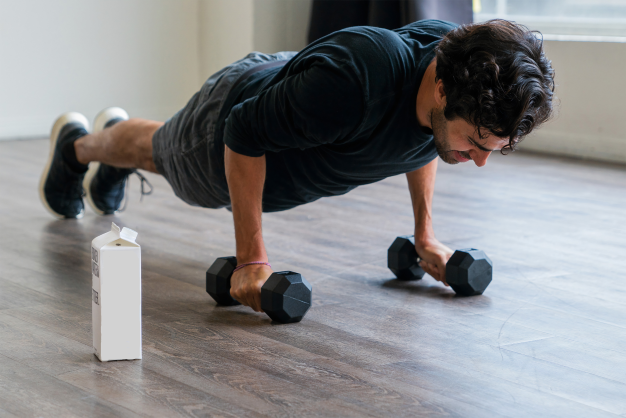In this day and age, when exercise and staying active is the key to live a healthy lifestyle, both mentally and physically, there are still some myths people like to believe in order to avoid or overdo exercising. And all of the myths generalize everyone’s physical condition in the same way. However, that is not the case for all. To enlighten our readers of the subject matter, here are some myths about when you can and cannot exercise are debunked below.
Exercise Turns Fat To Muscle And Stoping Turns Muscle To Fat:
Please don’t be mistaken. Fat and muscles are different types of tissue and one can not simply turn into another. exercise can take a lot of energy which the body gets by burning fat while improving muscle tone.

No Sweat, No Result:
Actually, sweating makes you lose weight but doesn’t burn fat. When you are active your body releases stored water to cool down. So the weight you end up losing is just water weight. It’s a sign from your body to rehydrate yourself.

Morning Exercise Has The Best Result:
Irrespective of what time of the day it is, working out at any moment is beneficial to the body at the same rate. Early morning workouts maybe jumpstart your metabolism for the day but a study published in The Physiological Society in 2019 disproved its necessity.
Pre-exercise Stretching Is a Must:
Many think stretching before a workout is important to loosen up your muscle so that they are flexible enough to lower the risk of a muscle tear. However, a study published in 2007 in the journal Research in Sports Medicine disproved it. Just a 10-15 minute warm-up would be enough to initiate a blood flow to the muscles and lessen the risk of tearing a tendon or pulling a muscle.

Stretching Afterwards Reduces Muscle Pain:
Sure, Stretching post-exercise helps in maintaining muscle and flexibility to prevent them from being stiff. But reducing muscle pain is not its forte.

Sit-ups And Abdominal Crunches Reduce Belly Fat:
A popular myth that was started long ago and is still promoted to this day is a spot treatment. But when it comes to losing weight or fat there is no such thing. Those exercises may tone up the muscle underneath the layer of fat. However, the body will slim down proportionately.
The Longer You Exercise The Better Results You Will Get:
Many people do low-intensity workouts for a long time and expect to burn more calories. But think of it like this, which pot of water will start boiling 1st, the one that’s at 200 degrees or the one at 20 degrees? Working out is the same. For a beginner, it’s okay to start with low-intensity and work your way up to higher.
Increasing Normal Movements Daily Doesn’t Help Lose Weight:
If you reduce sitting around or lying on the bed all the time and just move around, do some chores, help out at home, you are guaranteed to lose some extra weight. An increase in daily movement by even 2 hours over the course of a year can have great results.
Daily Hit The Gym:
Muscle soreness after an intense workout is a sign that your body is trying to rebuild the muscle that was worn out during the exercise. Taking a break for 1-2 days each week becomes a necessity for them to get ready for the next workout session

Bigger The Muscles, The Stronger Your Are:
If we ask, who is stronger, Thor or Hulk? You might answer, Hulk duh! But that is what fictional movies have taught us all these years. But that is false! A study in the journal Experimental Physiology in 2015 has proved that the muscle fibers of weight lifters and sprinters are stronger on a cellular level than bodybuilders. This reinstates the argument of quality over quantity.
Above 10 are some of the most common exercise myths that prevail in the minds of many fitness novices. These can easily demotivate or encourage a wrong intention for starting a new workout. That is why people should be made more aware of these and spread them to the person next to them.
FashionBlitzs/Nadia



